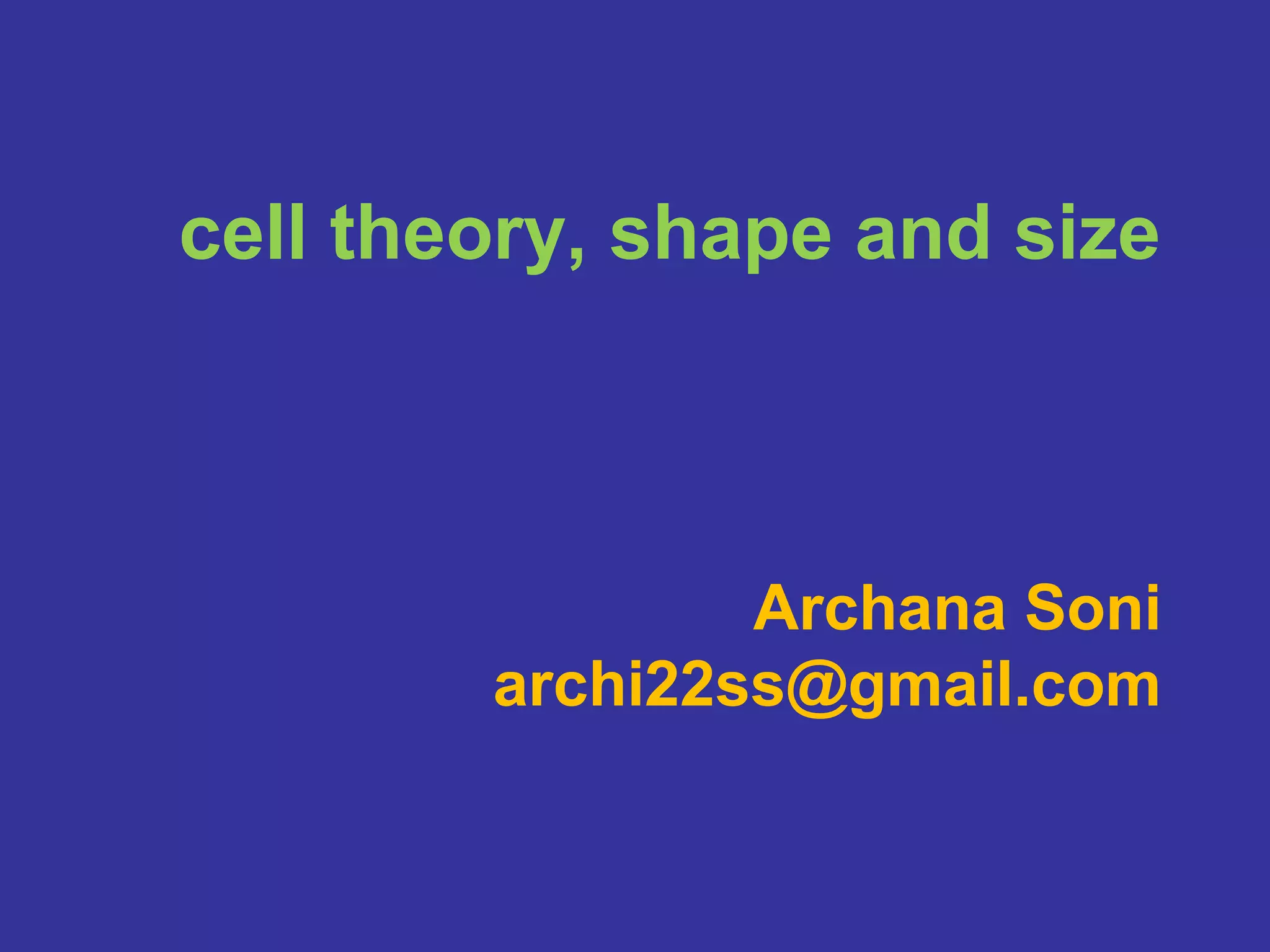The document summarizes the history and key concepts of cell theory. It describes how early microscopists like Hooke, van Leeuwenhoek, and Brown discovered key cell structures and components. In 1838, Schleiden concluded that plants are made of cells, and in 1839, Schwann concluded the same for animals, laying the foundations for cell theory. Virchow later established that cells only arise from pre-existing cells. The modern cell theory states that all living things are made of cells, cells are the basic unit of life, and new cells arise from existing cells. The document also discusses cell size, shape, types (prokaryotic vs. eukaryotic), and some of the



















